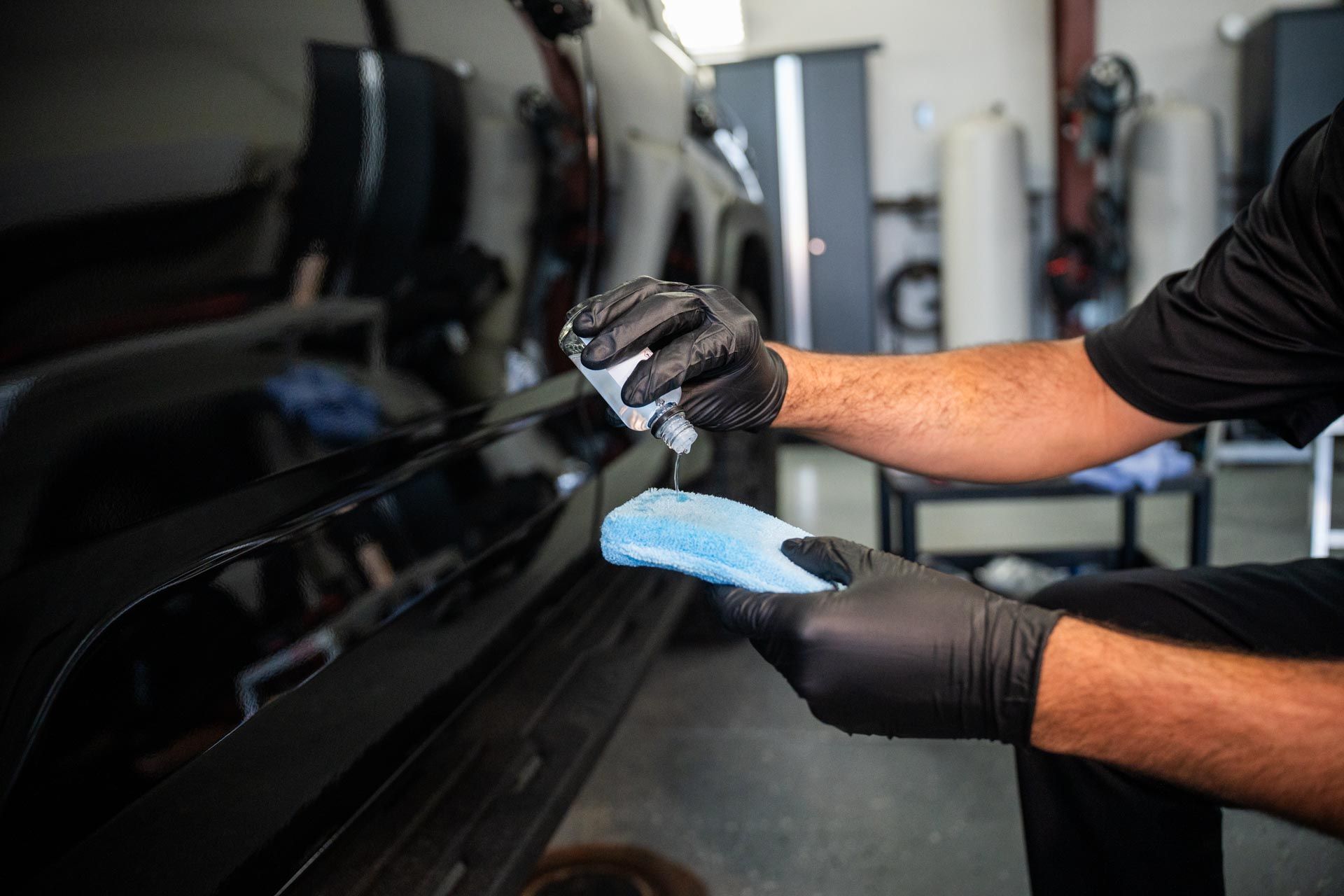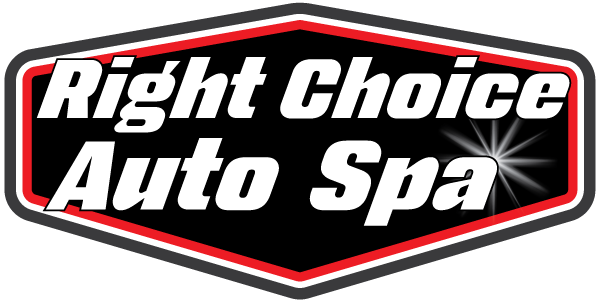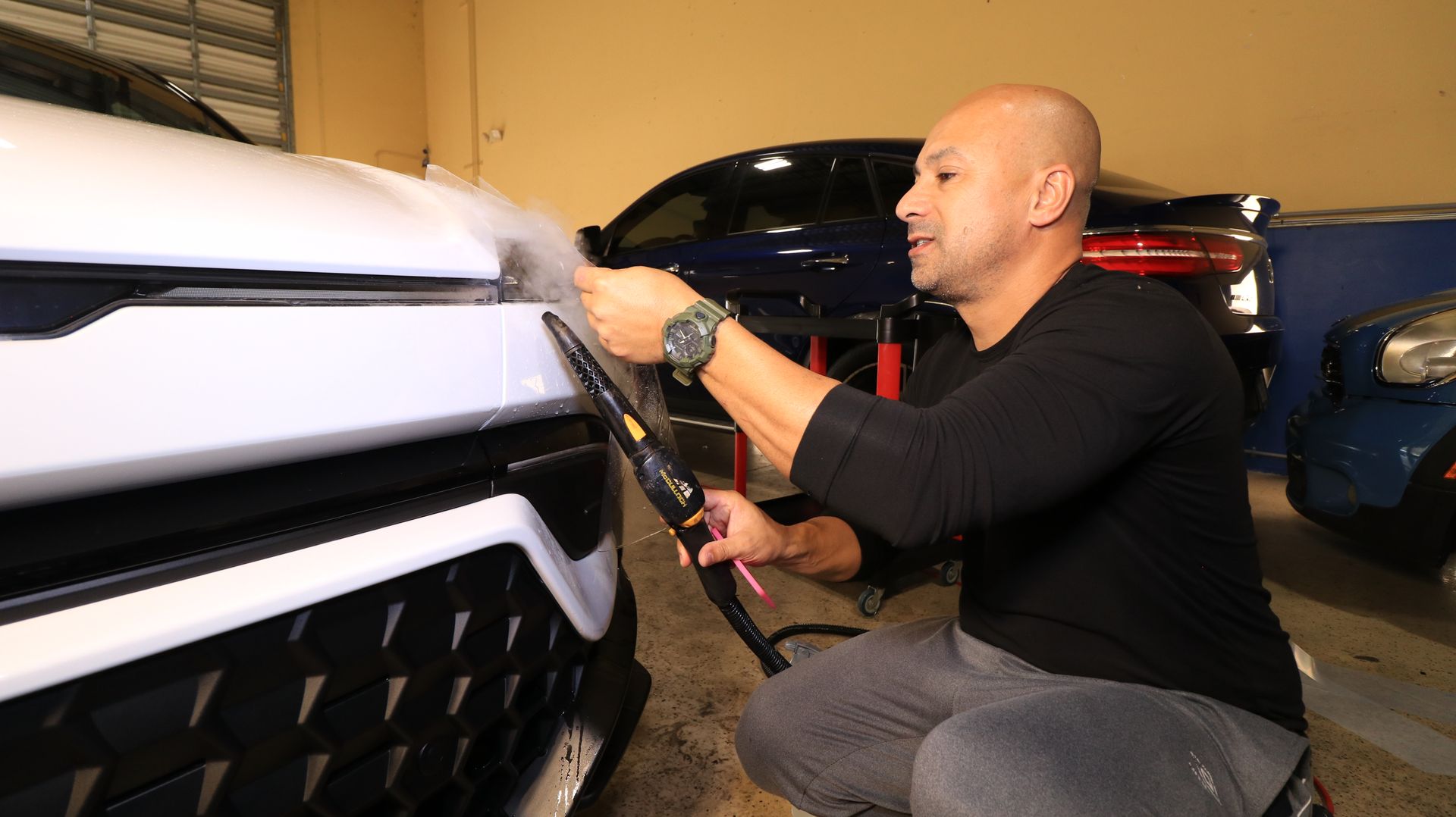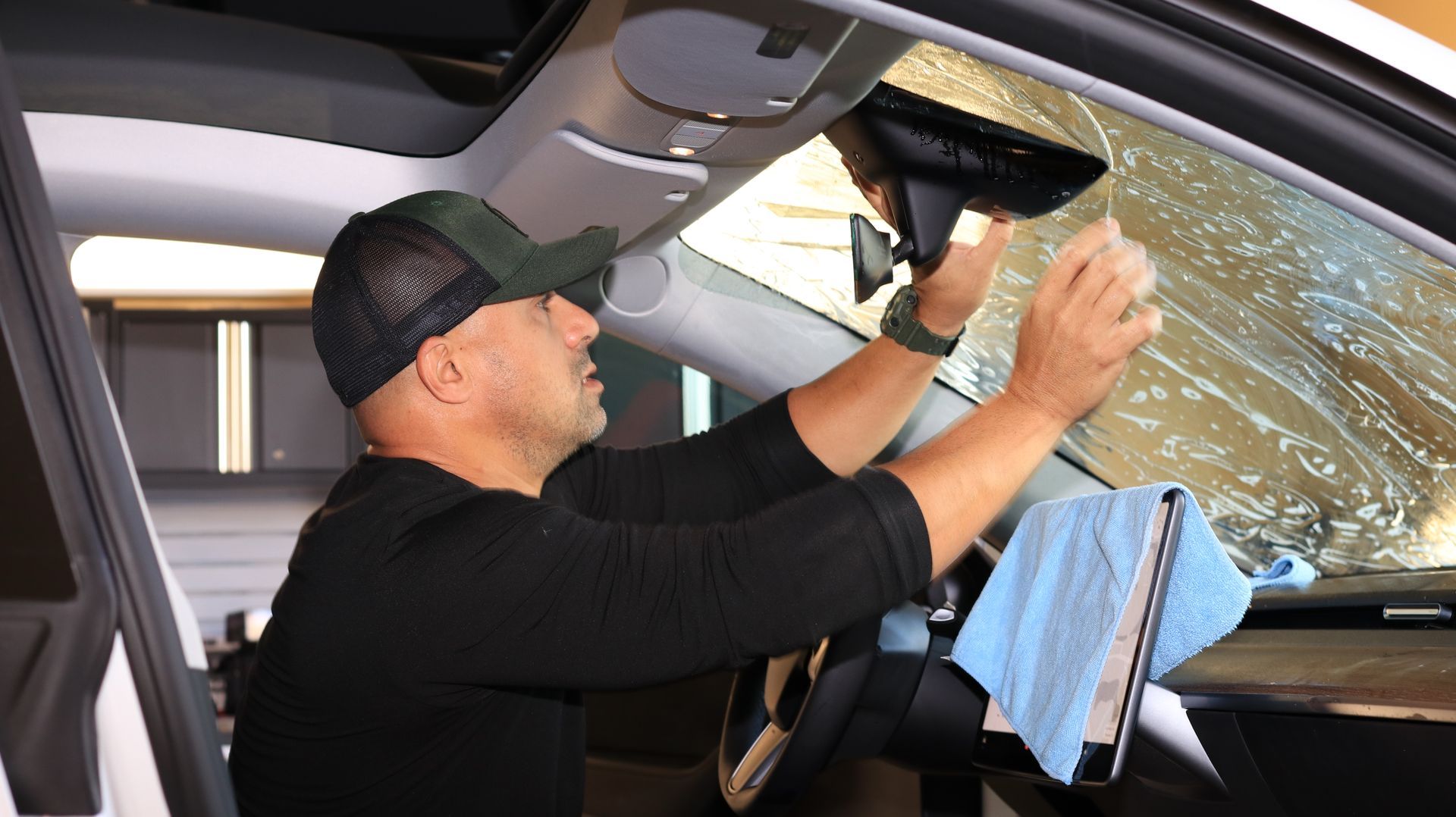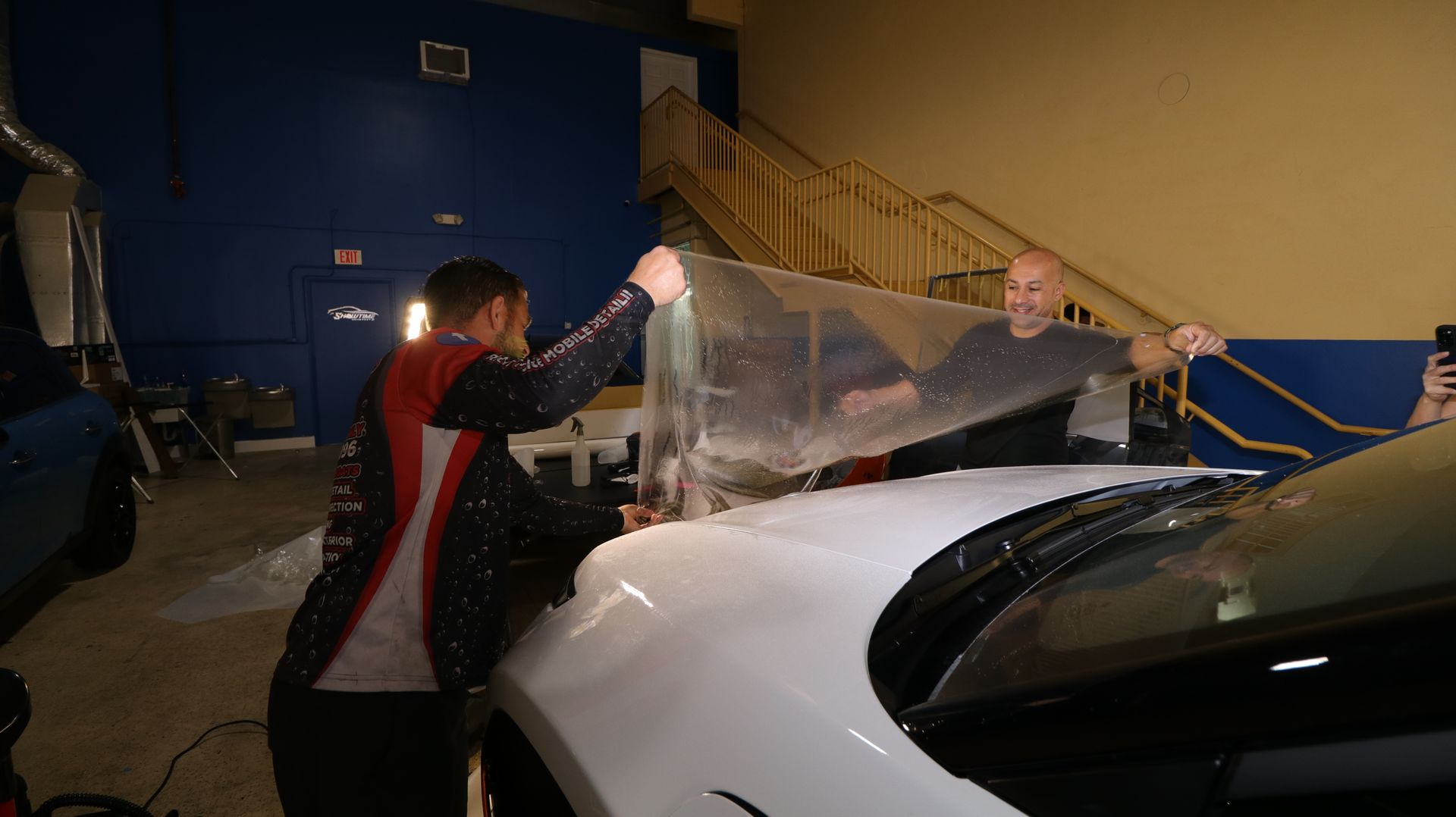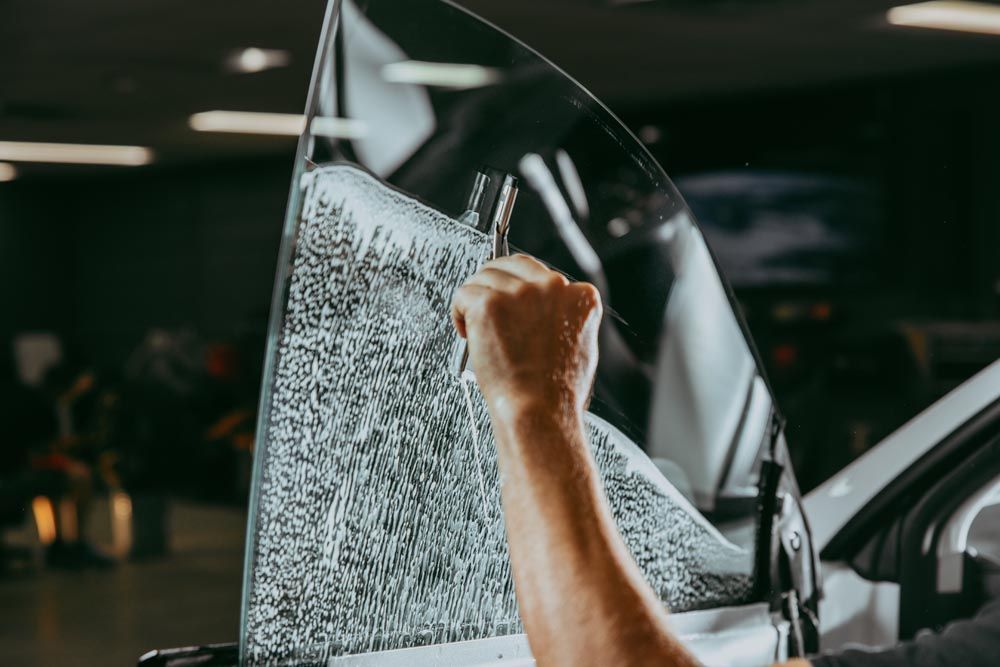How Many Layers of Ceramic Coating Can You Apply to Your Car? Tips for Durability
If you're thinking about ceramic coating your car, one big question probably comes to mind: how many layers should I actually put on? It's tempting to assume the more layers you add, the better the protection, but it's not quite that simple. Getting just the right number of coats can make a huge difference in how well your car's finish holds up over time without wasting product or money. In this article, we'll break down what happens when you apply multiple layers, how it affects durability and shine, and the sweet spot for most drivers looking for lasting results.
Typically, you can apply 1 to 2 layers of
ceramic coating for effective protection without risking diminishing returns. While some manufacturers allow additional layers, two coats usually provide the best balance of durability, depth, and cost-effectiveness when paired with proper surface preparation and maintenance.

Introduction to Ceramic Coating
At its core, ceramic coating is a specially formulated liquid polymer that, when applied to your vehicle's exterior, bonds chemically with the paint. This bond isn't like waxing or traditional sealants that merely sit on top of your paint; instead, ceramic coatings fuse directly with the surface. Think of it as an invisible shield, like sunscreen for your car, that permanently alters the very makeup of your car's finish.
This permanence is what sets ceramic coatings apart and explains why their effects last much longer compared to waxes, which typically wash away after just a few weeks.
The key active ingredient in most ceramic coatings is silicon dioxide (SiO2), known for its hardness and durability. When cured properly, SiO2 forms an extremely tough layer only a few microns thick but remarkably resilient.
Along with other compounds, this creates a hydrophobic, or water-repellent, surface on your paintwork. Water simply beads up and rolls off, taking dirt and grime along with it. You might have seen this effect on freshly waxed cars; ceramic coatings elevate this property to an advanced level that lasts far longer.
Beyond just repelling water, this barrier offers vital protection against several threats your car faces every day, especially here in South Florida. Ultraviolet rays from our intense sunlight relentlessly break down paint molecules, leading to fading and oxidation.
A well-applied ceramic coating can reduce UV damage by as much as 90%, preserving the vibrant color and gloss of your vehicle years longer than an uncoated or waxed surface.
Likewise, chemical stains, from acid rain to bird droppings, find it harder to etch into the paint when shielded by these coatings.
Knowing how the science supports such benefits helps explain why applying ceramic coating is more than cosmetic, it's a smart long-term investment in maintaining your vehicle's value and appearance.
However, despite manufacturer claims touting durability between five to ten years, the practical reality for daily-driven cars often ranges closer to 12–24 months. Environmental factors play a significant role here: cars parked outdoors face harsher conditions like road salt, airborne pollutants, and Florida's brutal sun, which can gradually break down the coating over time.
A critical piece often overlooked is preparation, thorough washing, decontamination with clay bar treatment, and polishing before application can boost coating adhesion by roughly 30%, directly impacting how long those glossy defenses last.
With all these facets combined, the molecular chemistry creating a hard protective shell, resistance to UV rays and contaminants, and the importance of surface prep, it becomes clear why ceramic coating commands attention from car care experts.
It's not magic, but rather solid science paired with meticulous application that achieves remarkable results in preserving your vehicle's finish while delivering ease of maintenance.
For those exploring options at Right Choice Auto Spa or similar professional services, understanding these principles empowers you to make informed decisions about how many layers to apply for optimum protection and selecting products suited specifically for South Florida's driving environment.
After establishing this foundation of knowledge about coating composition and durability factors, we can better appreciate how layering strategies influence performance and longevity.
This leads naturally into examining the specific benefits and considerations tied to applying multiple layers of ceramic coating on your vehicle.
Benefits of Multiple Layers
Adding more than one layer of ceramic coating isn't just about piling on product, it actually changes how well your car's paint is protected and how beautiful it looks. Each additional coat builds up the thickness of the protective barrier, which means better resistance to everyday scratches, swirls from washing, and minor abrasions that might otherwise dull your finish quickly. Imagine the first layer as a solid shield; then the second and third layers act like reinforcements, fortifying that armor against harsher conditions.
This increase in durability isn't just theoretical. A single layer typically delivers protection for about 12 to 24 months on daily-driven vehicles, but applying two layers can extend that lifespan to somewhere between three to four years. The third layer pushes durability even further, approaching five years in some cases, while also improving resistance to chemical damage and UV fading by a noticeable margin.
This scaling effect happens because the coatings bond at a molecular level with your paint, creating a thicker, tougher skin every time you add a new layer.
Beyond protection, however, lies another compelling reason many car owners opt for multiple layers: the incredible improvement in gloss and depth.
Depth and Gloss
There's a conversation among detailers and enthusiasts over whether one layer is truly enough if you're after show-quality shine. Some say one layer makes your paint pop enough for everyday use, but adding extra layers unlocks a richer visual effect, something akin to looking through crystal-clear water rather than glass smeared with fog. The difference can be subtle but unmistakable once you see it.
One customer shared their experience after receiving a double-layer application:
"After the second layer, my car's paint looked stunningly rich and sleek, almost like it had been freshly painted again. The light played off it differently, deeper reflections and that luxurious mirror-like finish."
This enhanced depth is due to how ceramic coatings interact with light; thicker coatings create smoother surfaces that reflect more light evenly, making the colors warmer and more vivid.
Additionally, multiple layers improve hydrophobic properties, the paint's ability to repel water dramatically improves as coatings are stacked. A single layer might achieve a water contact angle of around 90°, causing drops to bead modestly. But with two or three layers, that angle can jump to 110° or even 120°, meaning water beads roll off faster, carrying dirt and grime away effortlessly.
This self-cleaning effect not only keeps your vehicle looking cleaner longer but also reduces the risk of staining caused by contaminants sitting too long on the surface, especially important with Florida's frequent rain and humidity.
To put it into perspective:
| Number of Layers | Estimated Durability (Years) | Scratch Resistance Improvement | Gloss Increase | Hydrophobic Contact Angle (Degrees) |
|---|---|---|---|---|
| 1 | 1-2 | Baseline | Baseline | ~90 |
| 2 | 3-4 | +15-20% | +10-15% | 110-115 |
| 3 | Up to 5 | +25-30% | +20-25% | 115-120 |
It's important to note that while more layers increase these benefits, going beyond three layers usually shows diminishing returns. After that point, additional coats don't significantly enhance durability or shine and may not justify extra cost or time investment.
For most drivers who want robust protection coupled with eye-catching gloss, two to three layers hit the sweet spot, balancing upfront expense with lasting payoff.
Of course, achieving these benefits depends heavily on correct preparation and application techniques before layering begins. Without proper cleaning and decontamination of your paint surface, additional coats won't bond effectively and won't deliver optimal results, details matter here.
At Right Choice Auto Spa, we ensure every vehicle undergoes meticulous surface prep before applying any ceramic coating. This includes thorough washing, clay bar treatment to remove embedded contaminants, and often a light polish to eliminate minor imperfections. These steps create a pristine base so each ceramic layer bonds perfectly and performs at its best over time.
Layering isn't about rushing through applications, it's about building quality protection step by step. Investing in multiple coats when done right doesn't just safeguard your paint; it elevates your vehicle's appearance in ways that make everyday driving feel special.
If you're considering how many layers are right for your car's needs, remember: quality preparation plus careful layering equals durable beauty worth the effort.
Knowing how layering impacts durability and appearance sets the stage for understanding just how many coats offer the optimal balance of protection and cost-efficiency. Next, we explore what combination works best based on different driving habits and environmental factors.
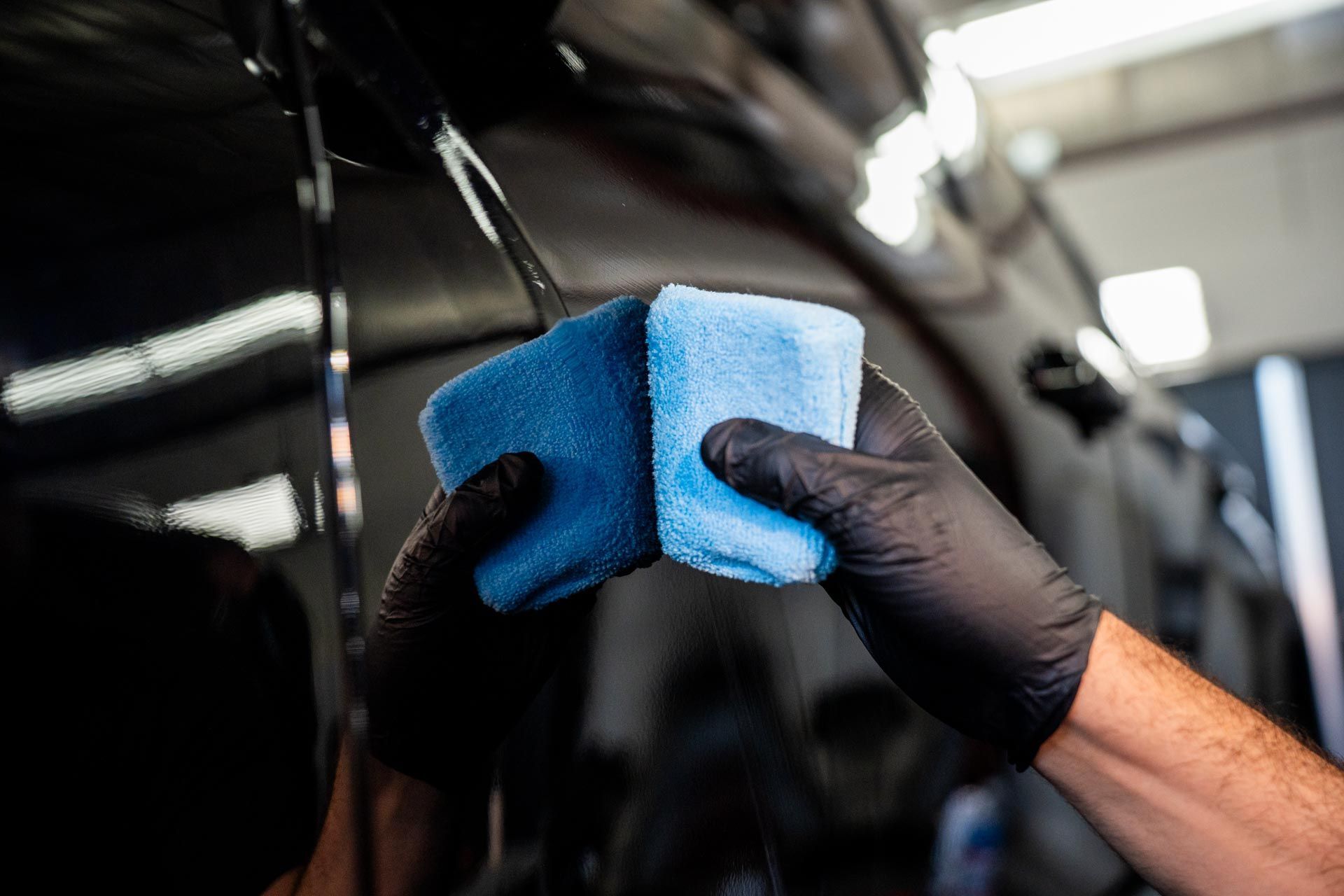
Optimal Number of Coating Layers
While it's tempting to think that piling on more layers of ceramic coating will make your car nearly indestructible, the reality is more nuanced. Most professional detailers and manufacturers agree that applying 2 to 3 layers strikes the perfect balance between durability, gloss, and cost-effectiveness.
Applying fewer than two layers often means you miss out on building a robust protective barrier, while going beyond three layers offers minimal added benefit but can introduce problems like uneven finish or chemical incompatibility between coatings.
Each layer plays a specific role. The first one, typically called the base coat, bonds tightly with your car's clear coat thanks to its high silicon dioxide (SiO2) content. This bond forms the foundation for protecting your paint from UV damage, minor scratches, and chemical contaminants. Subsequent layers build thickness and enhance features such as hydrophobicity, the ability of water to bead and roll off, along with deepening the gloss and smooth feel of your paint.
| Brand | Recommended Layers | Additional Notes |
|---|---|---|
| GYEON Quartz | 2-3 layers | Ensure proper curing of each coat before applying the next |
| Ceramic Pro | 3 layers | Third layer significantly boosts gloss; requires strict curing times |
| Opti-Coat | 2 layers | Bonding strength peaks after second coat; extra coats don't add durability |
These manufacturer guidelines exist not just as suggestions but as carefully tested protocols designed to maximize the coating's lifespan and appearance without risking surface issues. At Right Choice Auto Spa, we've seen how sticking closely to these recommendations prevents common pitfalls such as streaking, peeling, or blotchy finishes caused by overapplication or insufficient curing time.
It's also crucial to follow proper curing times between layers, waiting anywhere from three to four hours between base coats and allowing at least twelve hours before applying the topcoat ensures each layer bonds correctly and fully cures. Neglecting this step often results in a compromised finish that lacks durability.
Another important consideration is that ceramic coatings are extremely thin, about 1-2 microns per layer. So instead of thinking "more is better," it's about precision and layering intelligently. Overuse can create greasy surfaces that attract dust or undermine the hydrophobic qualities.
Grasping these details sets the stage for exploring whether hiring professionals or taking the DIY route makes more sense when applying ceramic coatings, each path brings its own set of advantages and challenges.
Professional vs. DIY Applications
Opting for a professional ceramic coating service means entrusting your vehicle to experts who understand the nuances of paint protection inside and out. At places like Right Choice Auto Spa, professionals don't just apply coating; they begin with an exhaustive surface preparation that involves multi-stage paint correction, decontamination, and polishing.
This preparation is critical because any dirt, oils, or imperfections left on the paint can prevent the coating from bonding properly, shortening its lifespan and undermining its protective qualities. The difference here is akin to laying a flawless foundation before building a house. Without this care, even the best coatings can falter.
Moreover, professionals apply ceramic coatings in controlled environments where temperature, humidity, and dust are regulated. This controlled curing ensures that layers set evenly and strongly, something difficult to replicate in a typical garage or driveway.
Plus, many professional coatings come with warranties covering durability and performance, which adds peace of mind beyond the initial investment. Customers often report their professionally coated vehicles maintaining exceptional hydrophobicity and gloss retention for years longer than those treated with self-applied products.
On the other hand, DIY kits have gained popularity for those who want to protect their car without breaking the bank or committing to professional work.
DIY ceramic coatings provide a tempting mix of affordability and hands-on control. However, the success of a DIY project hinges heavily on how well you follow preparation steps: thorough washing, decontaminating with clay bars, proper drying, and possibly even light polishing to remove minor swirls or scratches.
Missing or rushing any step can cause uneven curing, leaving streaks or blotchy marks that dull your car's finish rather than enhance it. Think of it like baking a cake, you need to measure ingredients carefully and respect baking times; skip or muddle a step and the results will disappoint.
"Applying DIY coatings without adequate prep is like trying to build a sandcastle during high tide, no foundation means it won't last."
Another practical consideration is that most DIY kits recommend applying one or two layers but warn against over-layering since additional coats can cause surface haziness or poor adhesion if not perfectly executed.
While professional products promise 2–5 years of durability, DIY coatings usually last about 1–2 years before requiring reapplication. Frequent upkeep can prolong their life but demands ongoing commitment.
Cost-Benefit Snapshot
| Aspect | Professional Application | DIY Application |
|---|---|---|
| Cost | $500 - $2,000+ depending on layers | $50 - $150 per kit |
| Application Time | 1 to 3 days including prep and curing | 2 to 6 hours usually |
| Surface Prep Quality | Multi-step paint correction & decontam | Limited to owner's skill level |
| Environmental Control | Controlled booth environment | Typically uncontrolled garage/driveway |
| Durability | 2–5 years (with warranty) | ~1–2 years |
| Warranty | Often included | Rarely available |
If you love your car enough to invest in truly long-lasting protection with minimal hassle afterward, professional application is worth considering seriously. But if budget constraints or timing make professionals impractical, be prepared to spend more time upfront learning and executing meticulous prep work yourself.
Both methods offer distinct advantages: professionals deliver superior durability and finish backed by guarantees; DIY provides cost savings and personal satisfaction while requiring patience and precision.
Knowing these options lets you plan not only for initial protection but also for how best to maintain your vehicle over time. This leads naturally into exploring effective care routines that maximize your coating's lifespan and keep your car looking showroom-fresh.
Best Practices for Maintenance
Maintaining a ceramic coating on your vehicle is less about piling on layers and more about consistent care that preserves the coating's protective abilities. One of the fundamental steps to keep in mind is regular washing. Every 1 to 2 weeks, give your car a gentle bath using a pH-neutral car shampoo designed specifically for ceramic coatings. This isn't just about cleanliness, it's about protecting that glossy shield from contaminants like road grime, bird droppings, and industrial fallout that can slowly degrade the coating's hydrophobic properties if left unchecked.
For example, harsh soaps or detergents can strip away or weaken the ceramic layer over time, so using the right shampoo makes all the difference.
When it comes to washing technique, adopting the two-bucket wash method can be a game changer. One bucket holds soapy water and the other clean water designated for rinsing your microfiber mitt or sponge before dipping back into the soap. This reduces dirt transfer and minimizes micro-scratches, critical because even tiny abrasions can dull that brilliant finish you've invested in.
After washing, drying with high-quality microfiber towels or using an air dryer in shaded areas prevents water spots which could otherwise leave mineral deposits that dull the coating's shine.
Another important piece of maintenance is steering clear of harsh chemicals and abrasive materials. Avoid automatic car washes equipped with stiff brushes that can scratch delicate surfaces. Instead, opt for hand washes with soft tools, like wool mitts or soft-bristle brushes, which gently remove dirt without compromising the surface.
While harsh cleaners are out, periodic use of a ceramic coating booster spray every 3 to 6 months is highly beneficial. These boosters help restore diminished hydrophobic effects and enhance gloss without adding buildup, because applying excessive new layers too often can cause eventual cloudiness or uneven texture.
Beyond routine cleaning, conduct periodic inspections of your coating's condition. Look closely for signs of wear such as loss of water beading, increased dirt adhesion, or visible scratches. Identifying these early means you can take timely action with professional touch-ups or reapplications before any damage becomes permanent.
Keeping an eye out also guides you on when to schedule visits to experts like those at Right Choice Auto Spa, where trained technicians ensure coatings are maintained flawlessly.
Lastly, consider environmental factors in your maintenance routine. Parking your vehicle in shaded or covered locations significantly reduces UV exposure which can deteriorate coatings over time. Even though ceramic coatings offer excellent resistance to environmental elements, prolonged sun exposure, especially in South Florida, accelerates breakdown processes at a microscopic level. And steer clear from washing cars in hot water, it might feel satisfying but heat can potentially damage the ceramic chemistry.
"Maintaining your ceramic coating is not about layering endlessly; it's about treating it with respect through careful habits."
Think of your ceramic-coated car as an investment deserving ongoing precision care: gentle yet effective washes with pH-neutral products every couple of weeks; avoidance of abrasive materials; occasional booster applications; thoughtful inspections; and protection from harsh environmental conditions. Together, these habits extend durability and keep your car radiant regardless of miles driven.
To ensure optimal protection and longevity for your ceramic coating, trust professionals who specialize in detail-oriented care. At Right Choice Auto Spa, we provide expert maintenance packages tailored to preserve that showroom shine you worked hard to achieve.
Proper maintenance routines are vital, but many pitfalls can undermine your efforts if overlooked. Understanding common pitfalls will equip you better to protect your investment effectively without unnecessary setbacks.
Common Mistakes to Avoid
One of the most frequent, and costly, mistakes people make when applying ceramic coatings is rushing surface prep. Think about it: your car's paint might look smooth at first glance, but under that gloss could be dirt, oils, or microscopic contaminants trapped in the clear coat.
If these aren't removed through thorough decontamination steps like washing, clay bar treatment, and polishing, the ceramic coating won't bond properly. It's like painting over dirt, the finish will be uneven and fragile.
Skipping something as simple as a clay bar treatment can leave gritty particles untouched, which creates an unstable base for the coating. This ultimately leads to premature peeling or patchy surfaces, and no one wants to pay for a gorgeous ceramic finish that fails within months.
Once you get the surface perfectly prepared, patience is your next best friend during application.
Applying multiple layers of ceramic coating sounds appealing for extra durability, but this ambition can backfire if you don't respect curing times. Each layer needs its full curing period, usually several hours to days depending on the product, to chemically bond with the paint beneath it.
Rushing through this phase by immediately applying another coat traps solvents and prevents proper hardening. The result? A weak finish that's prone to chipping or dulling far sooner than it should. Following manufacturer instructions closely here isn't optional; it's essential for building that strong shield against UV rays, chemicals, and dirt.
Letting your car rest in a clean, dry environment during curing gives the coating time to settle firmly and develop maximum resilience.
Even after successful application, what you use on your coated vehicle matters more than many realize.
Many car owners unknowingly sabotage their investment by using harsh soaps or automatic washes incompatible with ceramic coatings. These detergents often contain strong chemicals or abrasive elements that strip away the protective layer or cause micro-abrasions on your paint.
To maintain that vibrant shine and hydrophobic effect, it's vital to wash your vehicle only with pH-neutral shampoos and soft microfiber mitts designed specifically for coated surfaces. Steering clear of automatic brushes or harsh cleaners will extend your coating's life significantly.
Also, avoid "set it and forget it" mindsets, periodic maintenance products like ceramic toppers every few months help reinvigorate the finish and plug any microscopic wear spots before they spread.
"The longevity of your ceramic coating depends largely on how well you prepare, apply, and maintain it, not just what brand you choose."
For optimal results and long-lasting protection tailored precisely to your vehicle, place your trust in experienced professionals. At Right Choice Auto Spa, our certified installers commit to meticulous prep work, expert application techniques, and personalized maintenance plans so your ceramic coating performs at its absolute best year after year.
Proper preparation, patient application, and thoughtful maintenance form the foundation of a durable ceramic coating that truly protects your car's appearance over time. Investing in quality service ensures your vehicle stays stunning longer while saving you money in the long run.
Final Thoughts
Deciding how many layers of ceramic coating to apply comes down to balancing your goals, budget, and commitment to maintenance. While a single layer provides solid baseline protection, two to three layers deliver the optimal combination of durability, gloss, and long-term value, especially for vehicles facing South Florida's intense sun, humidity, and daily driving conditions.
Remember, ceramic coating isn't a "set it and forget it" solution. Even the most advanced multi-layer application requires ongoing care with pH-neutral washes, gentle drying techniques, and periodic booster treatments to maintain its protective qualities and stunning appearance.
Whether you choose professional application or a DIY approach, the key to success lies in meticulous surface preparation and respecting proper curing times. Cutting corners on prep work or rushing between layers will compromise even the highest-quality products.
At Right Choice Auto Spa, we've seen firsthand how proper ceramic coating application transforms vehicles and protects your investment for years. Our team takes pride in delivering precision prep work, expert multi-layer applications, and personalized maintenance plans that keep your car looking showroom-fresh mile after mile.
If you're ready to give your vehicle the protection it deserves, or if you have questions about which coating package is right for you, reach out to us. We're here to help you make the smart choice for your car's long-term care.
Your ride deserves to look its best, let's make it happen together.
